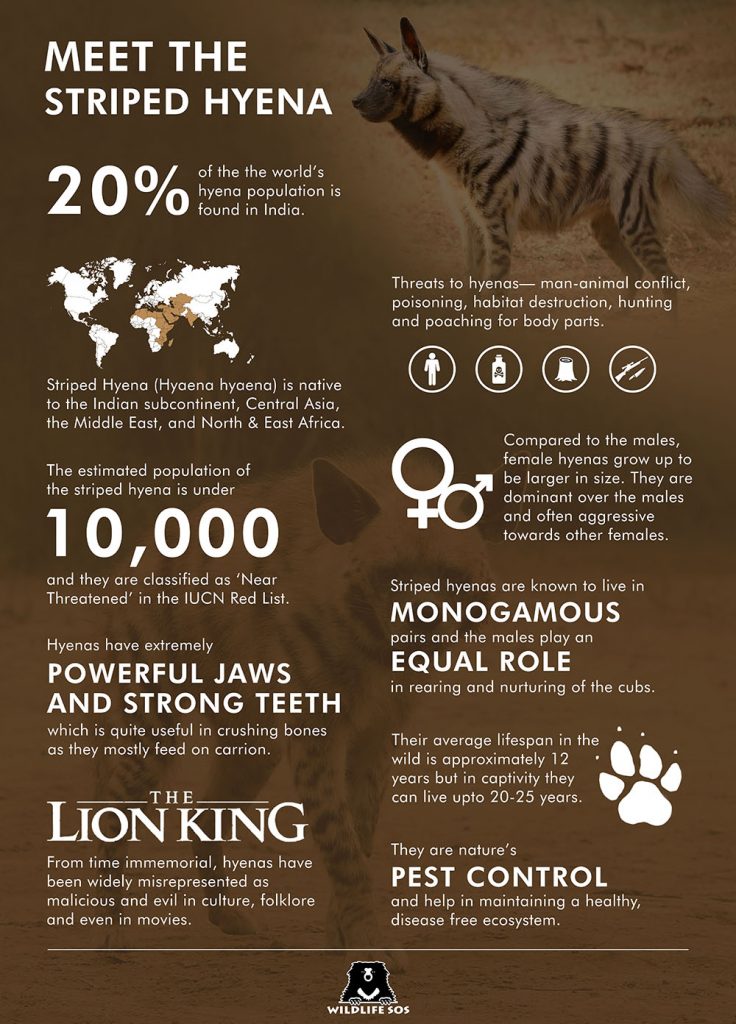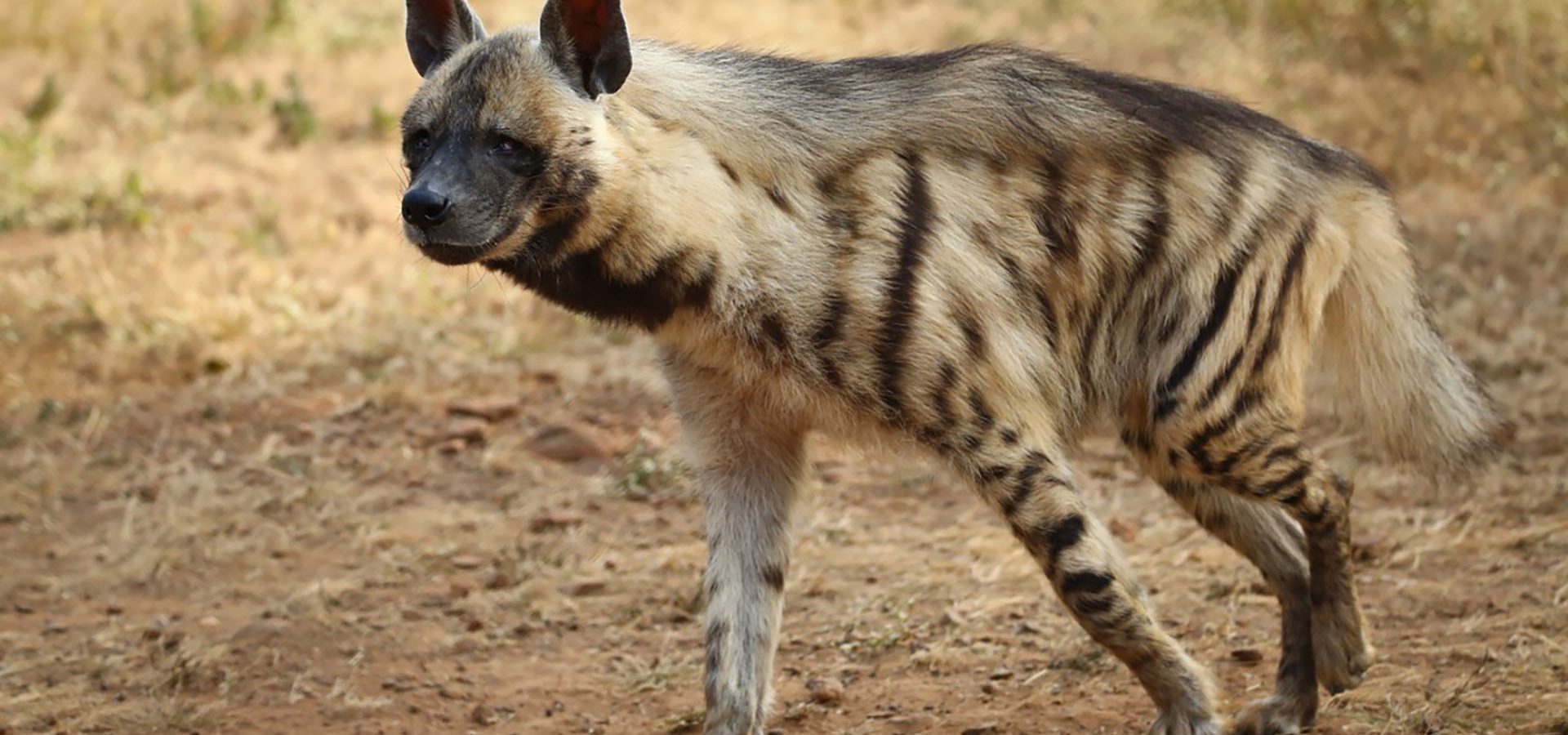In a rather unfortunate but all too common scenario, an adult hyena was found critically injured in the state of Uttar Pradesh earlier this week. A farmer residing in Rasulpur village located in Fatehabad had discovered the animal lying in a semi-conscious state in his bajra field.
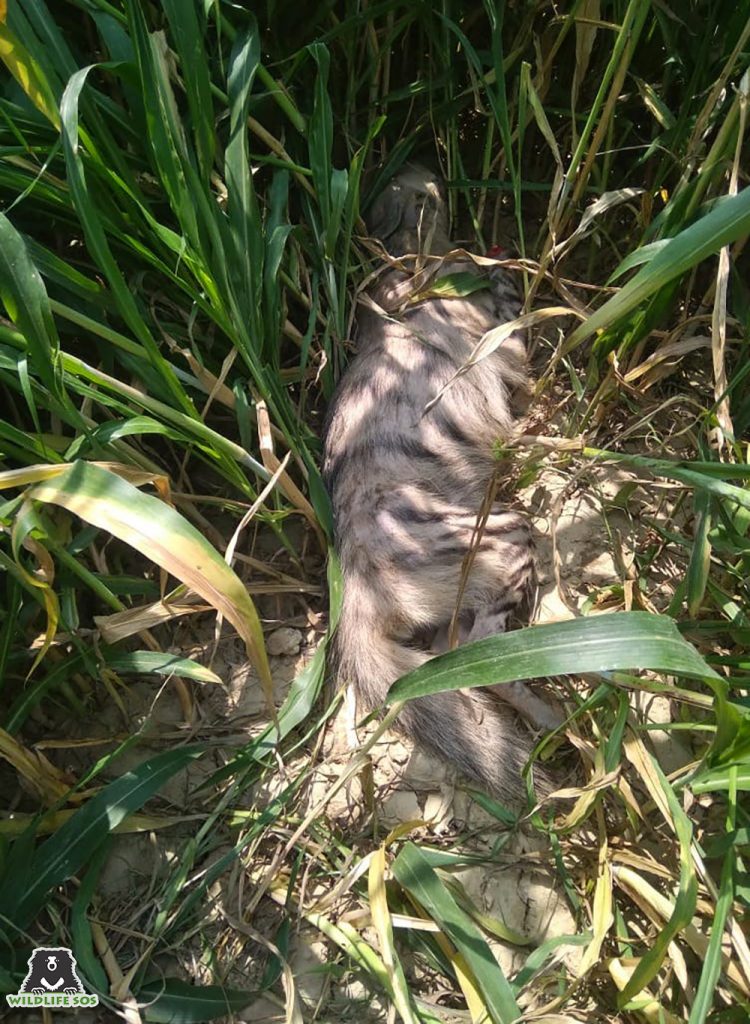
Shock and concern for the animal washed over the farmer the moment he got a closer look at its condition. A layer of skin over the hyena’s left forelimb was scraped off and there were several abrasions on the body. Understanding the severity of the situation at hand, he immediately alerted the Forest Department who in turn, contacted our team at the Agra Bear Rescue Facility for assistance.
A three member rescue team rushed to the location, equipped with protective gear and a specialised animal ambulance to accommodate the injured hyena. With the help of forest officers who were present on site, they gently lifted its limp body into the ambulance and rushed back to the Agra Bear Rescue Facility.
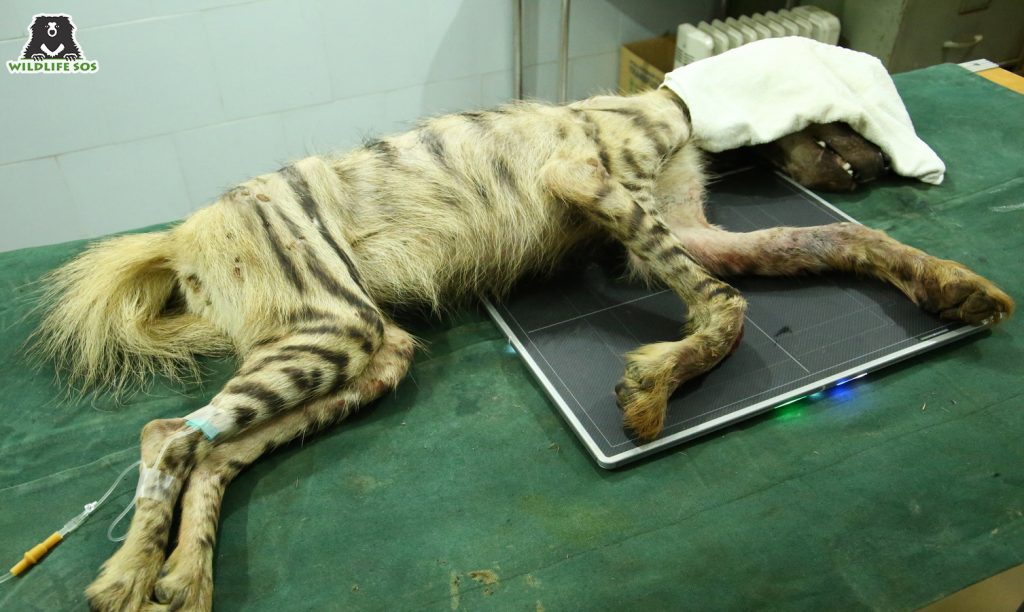
The Wildlife SOS veterinary team immediately wheeled the hyena to the Operation Theatre for critical medical examination to determine the extent of its injuries. Detailed X-ray examination confirmed a fracture in the left limb which was fairly recent. They also detected an older fracture in the right limb. To ensure rapid healing of the fractured bones, both forelimbs have been put on cast. Oral rehydration solution and glucose water was given to help the hyena recover from heat exhaustion, along with a dose of antibiotics and painkillers to ease the pain. Identified as an adult female between 4-6 years of age, the hyena is currently in intensive care. We are yet to determine the cause of injury.
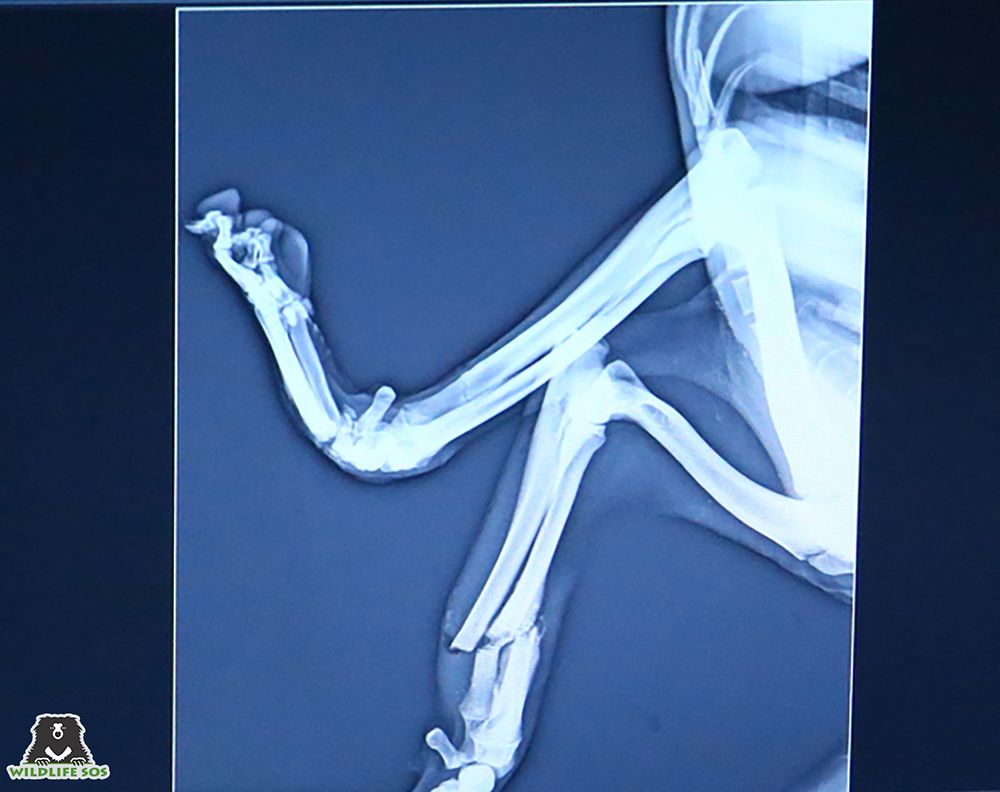
Given the extent of her injuries, the hyena’s chances of survival in the wild is uncertain at the moment and we are keeping her in our care before taking the decision to release her or provide her lifelong care at the sanctuary. We’re hoping our efforts and that the fighter in her prevails, so she could eventually return to the wild but in the event that release is not feasible, she will have a permanent home at our centre.
As scavengers, hyenas feed on carrion (animal carcasses) and are known to exist closer to human settlements or areas with cattle populations. Hyena sightings are reportedly common in Uttar Pradesh but more often than not, they come in conflict with humans or end up falling victim to road accidents and poaching.
Due to their scavenging habits, people tend to see them as harbingers of evil and are considered to be mounts of witches in some parts of the country. Our perceptions and prejudices against this highly formidable yet underrated species stems from misrepresentation throughout our history, in culture and folklore as well as in films! What we don’t necessarily acknowledge is that hyenas play a very vital role in maintaining a healthy ecosystem – apart from getting rid of biological waste by their scavenger habits; they also act as pest control!
The Striped hyena is the only species of Hyena that is found in the Indian subcontinent and are protected under the Wildlife Protection Act, 1972. Their estimated population is under 10,000 and are classified as ‘Near Threatened’ in the IUCN Red List.
